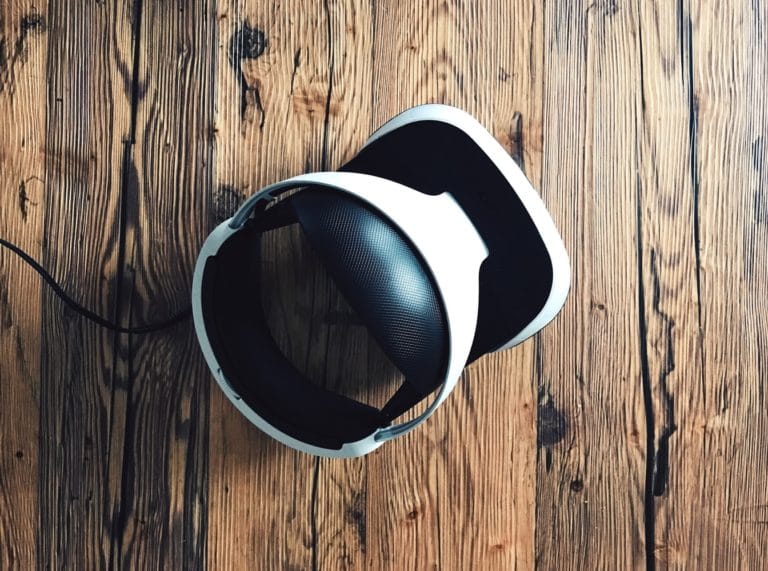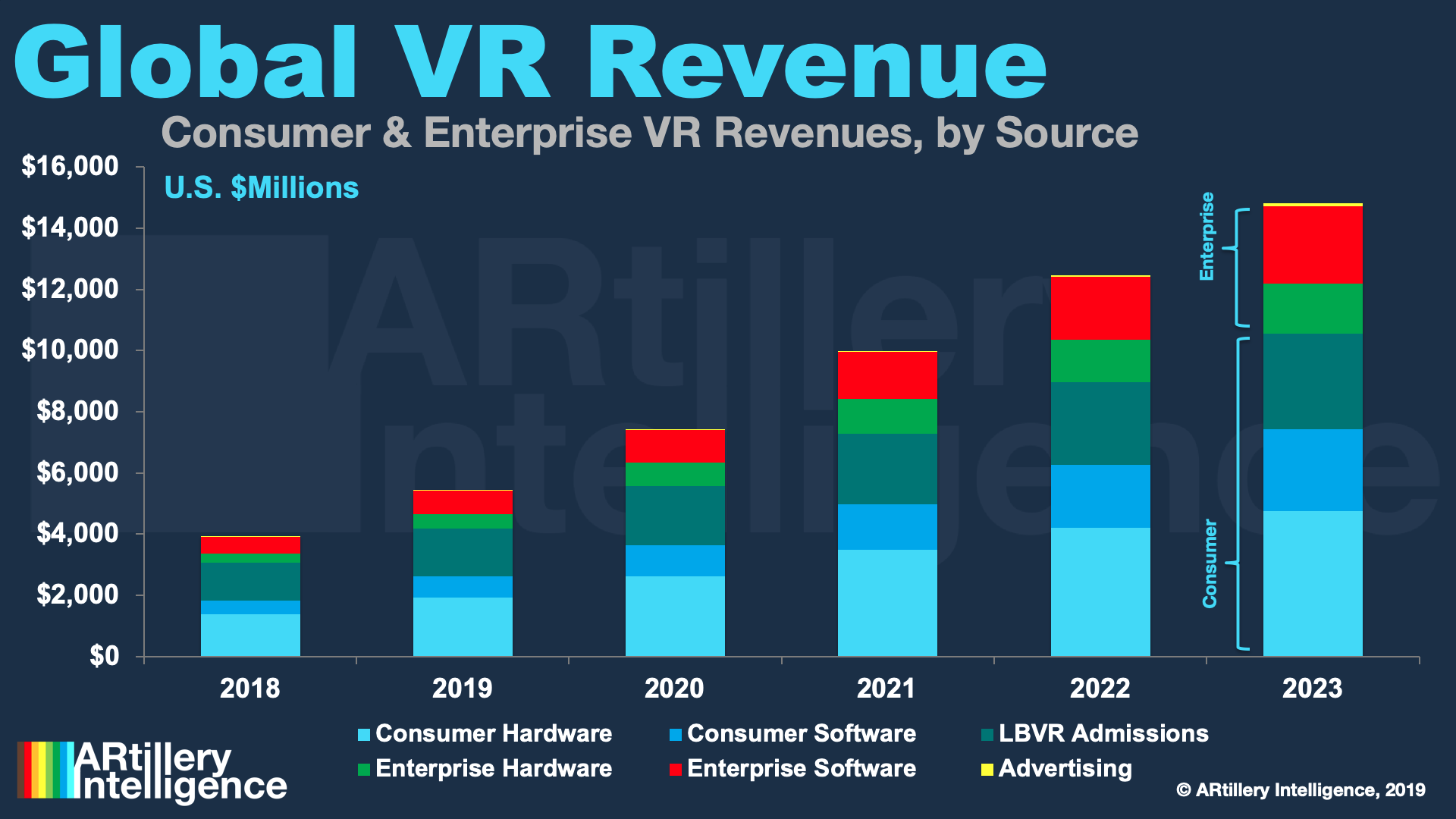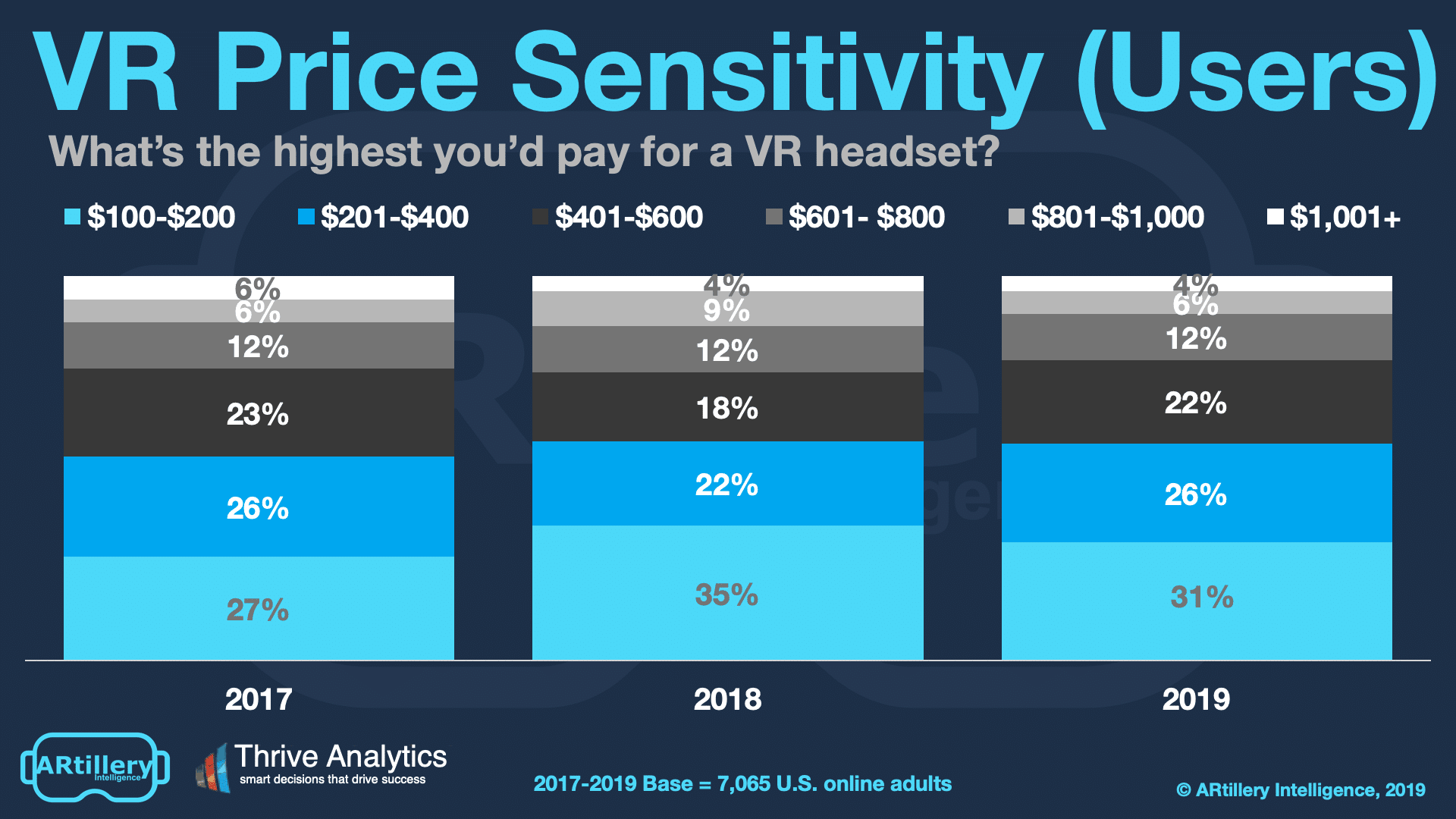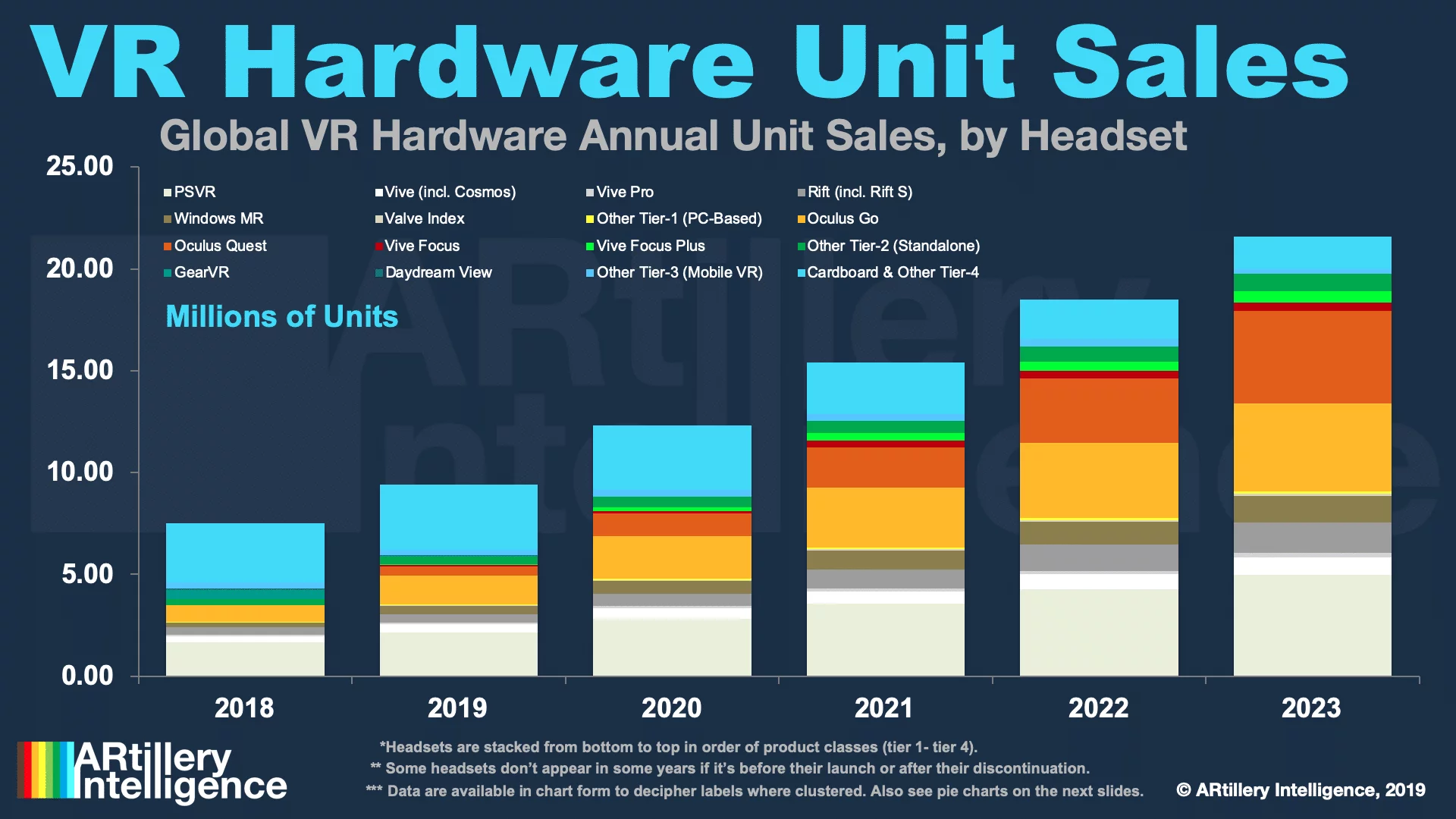
This post is adapted from ARtillery Intelligence’s report, Spatial Computing: 2019 Lessons, 2020 Outlook. It includes some of its data and takeaways. More can be previewed here and subscribe for the full report.
Picking up where we left off last week in diving into ARtillery Intelligence’s 2020 predictions, where does VR sit? There’s been erratic interest and investment in VR over the past few years, but there is positive momentum — albeit much slower than its proponents hyped in early stages.

VR’s Slow Climb
Though the majority of this report has focused on AR (reflective of ARtillery Intelligence’s focus), there are applicable learnings and market development for its cousin, VR. The VR market made strides in 2019, but they were more about positioning and “table-setting” than sales inflections.
Among these positioning moves was the continued success of the tier-1 VR hardware leader Playstation VR. Building on an installed base of 100,000+ Playstation 4 consoles and a compelling “experience sell”), it reached 5 million lifetime unit sales in June.
But perhaps more significant for the VR industry was the May launch of Oculus Quest. The long-awaited device didn’t disappoint, hitting the elusive sweet spot on the quality/price sliding scale. This includes 6DoF tracking, platform compatibility via Oculus Link, and rave reviews.
Zeroing in on price, It’s a big factor at this early and unproven stage of VR. ARtillery Intelligence consumer survey data with Thrive Analytics indicate that demand inflects at $200 and $400. Those happen to be the all-in price points for base-model Oculus Go and Quest, respectively.

Long Game
As background, Facebook’s long-run strategy compels aggressive pricing. This involves a loss-leader approach to establish its platform. Early market share is the name of the game in platform wars as it attracts developers, who grow the content library to attract more users – flywheel effect.
“This is Facebook accelerating adoption by subsidizing and selling these at very little margin,” said Tested’s Jeremy Williams. “That’s something the competitors can’t necessarily do, but we as consumers can take advantage of it. This is a device that probably shouldn’t exist at this price.”
With these factors in mind, our global VR forecast projected Quest’s 2019 sales at 470,000 units. Lower than other projections that exceeded 1 million units for the same time frame, our rationale took into account only six months of sales runway and other demand signals.
It now appears that 2019 Quest sales will be closer to 425,000 units. This considers several factors including extrapolations based on Facebook disclosures. To put this into perspective, it’s roughly equivalent to the longer-tenured Oculus Rift’s annual sales, but in half the time.

One Good Reason
Perhaps more important than today’s market performance is panning back to examine how Quest will tee up VR’s growth and mainstream consumer demand in the coming months and years. As mentioned, Quest (and Oculus Go) are long-term investments to bring more people into VR.
Based partly on Quest’s impact and halo effect, ARtillery Intelligence projects consumer VR to grow from $4.2 billion in 2018 to $10.6 billion by 2023. That’s led by hardware in the near term, with software’s revenue share increasing as it builds on a larger installed base.
Meanwhile, aggregate hardware unit sales for tier-1 (tethered) and tier-2 (standalone) VR headsets will grow from 3.8 million units last year to 19.8 million annually by 2023. This correlates to a cumulative installed base of in-market devices of 8 million in 2018 and 48.5 million in 2023.
But this growth requires more than just compelling and competitively-priced hardware. VR needs a better reason to buy, or a killer app. Outside of VR circles, there’s not one solid answer to the question of why one should buy VR. There are lots of little answers, but that’s not going to cut it.

VR’s Palm Pilot
Fortunately, Quest is advantaged by versatility. Out of the gate, it was somewhat limited to low processing power and thus a limited range of games (think: low-poly graphical styling). But with the adept Oculus Link, Quest can be tethered to PCs to play a wider range of Rift titles.
Meanwhile, Oculus Quest ports have performed well, including the closest thing yet to a killer app: Beat Saber. Congruent with its long-term investments in VR, Facebook acquired Beat Saber developer Beat Games, which should be another stimulant for the VR sector.
Based on these factors, some have labeled Oculus Quest as VR’s iPhone moment. We appreciate that optimism but a more appropriate analogy is the Palm Pilot. Quest is a design feat that will be appreciated for years, but is more of an evolutionary step to VR’s iPhone moment.
Meanwhile, Quest is what VR needs. Along with the Beat Games acquisition, which signals exit potential for developers, Quest’s growing installed base will attract developers to build content. Expanding content libraries will in turn attract more users… and the flywheel starts to move.
Check out the full report here.
For deeper XR data and intelligence, join ARtillery PRO and subscribe to the free AR Insider Weekly newsletter.
Disclosure: AR Insider has no financial stake in the companies mentioned in this post, nor received payment for its production. Disclosure and ethics policy can be seen here.
